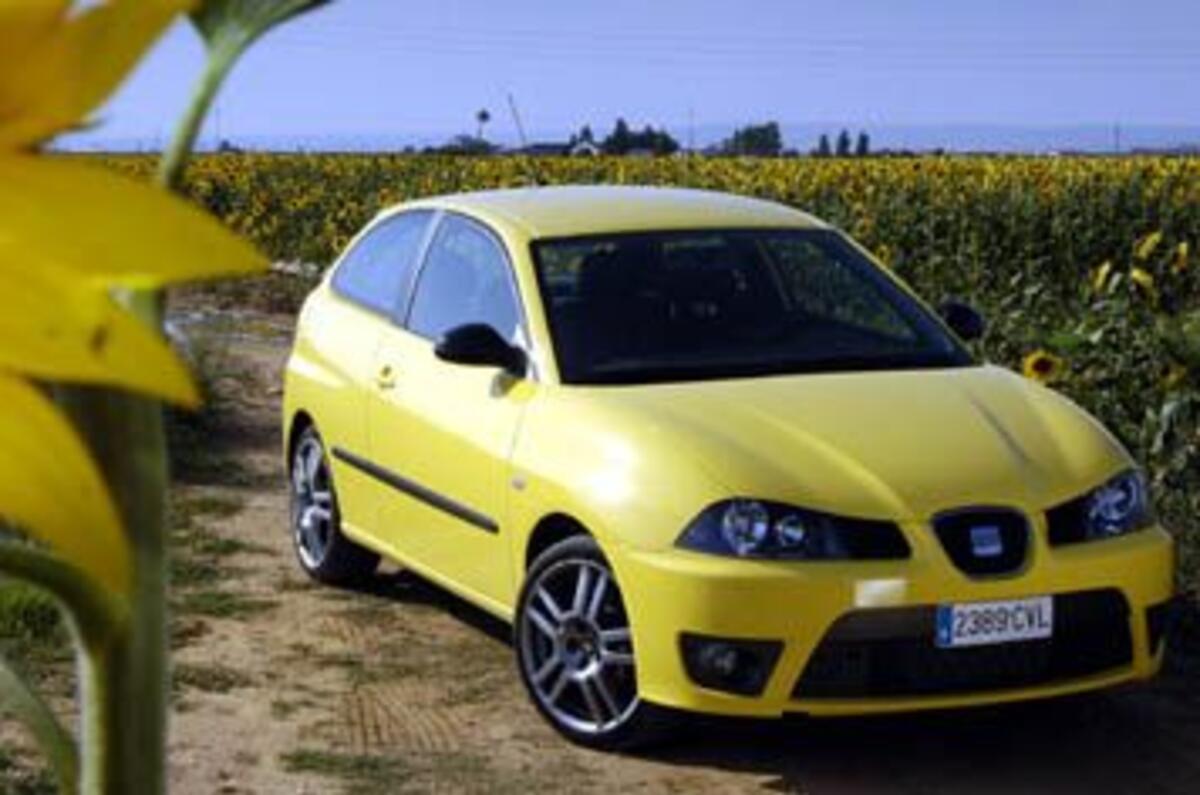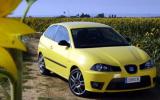‘For sure, we have a power deficit today’. That’s what the profusely perspiring Seat Sport engineer said. He’s from Barcelona. Down here in Andalusia – with the Cupra’s exterior temperature gauge nudging 40C – I’m picturing the Seat’s custard yellow paint melting into a roadside puddle, like Cornish ice-cream on a picnic.
The heat is making the Seat’s engine suffer – apparently the deficit could be as much as 15bhp – but the Cupra TDi has already shown today that with its full 158bhp and 243lb ft of torque, it has more than enough straight-line zap to justify the repositioned Cupra brand’s ethos of high performance tackle. It needs to; at £16,000 it’s pitched against the best in the class, regardless of fuel type.
Starting with the ubiquitous VW Group 1.9 TDi engine – in big-turbo 150bhp form – the engineers have reworked the passage of air into and out of the engine, remapped the engine management system and fitted a bespoke intercooler. There’s no meaningful action below 2000rpm, then the shot of boost arrives like a slap across the chops with a clammy haddock, squirming the steering wheel in your hands and building purposefully – if without quite the same initial ferocity – nearly all the way to the 5000rpm red line.
Seat claims a 0-62mph time of 7.6sec, which is acceptable for a petrol GTi let alone a diesel-drinker. It definitely feels that fast. This is the ugly face of high-performance diesels, devoid of fuel consumption pragmatism and shorn of the shackles of pursuing ever more petrol-like refinement. Seat’s engineers admit that better NVH would have harmed power and response; and we’re reluctant to deride such dedication to performance, in the face of apparently considerable corporate pressure.
Whether as an enthusiast the drawbacks over a highly tuned petrol engine – poor throttle response, a rough soundtrack and less overall interaction with the engine as a drivers’ instrument – are acceptable depends on your personal viewpoint. At least it remains frugal.
Our recent road test of the 150bhp 1.8T petrol Ibiza FR concluded that the chassis was fun, if lacking in true driver focus. As the hard-core Cupra variant this should be a lot more serious.
The 205/40 R17 tyres on each corner are fairly purposeful, and unsurprisingly there’s no shortage of outright grip available. Yet once again it is the Ibiza’s chassis that disappoints, or to be precise, the control its suspension has over the movements of the body. The steering – low on feel but nicely weighted – is quick, requiring only small movements from straight-ahead, but a sharp steering input provokes slightly more body roll than you’d expect. And once into a corner the Cupra can find it hard to settle on its springs, with too much fidgeting to inspire real confidence, especially at high speed. Try really hard and it feels ragged and short on poise.
Seat has specified softer springs with firmer dampers over the FR models, but the ride is still unyieldingly firm, even on the smooth Spanish roads of the launch, and as with the FR there’s a faint pogo-like motion that can make passengers feel queasy. Plenty of weight in the nose, from the iron-block motor, means the Cupra is more likely to understeer than flick out the tail with a lift of the throttle. Overall, it’s a car that doesn’t enjoy being pushed as hard as, say, a Renault Clio 182, yet manages to blunt its low-speed ability through its uncompromising ride quality.






















Add your comment